Indigenous
Grave Error: Correcting the False Narrative of Canada’s “Missing Children”
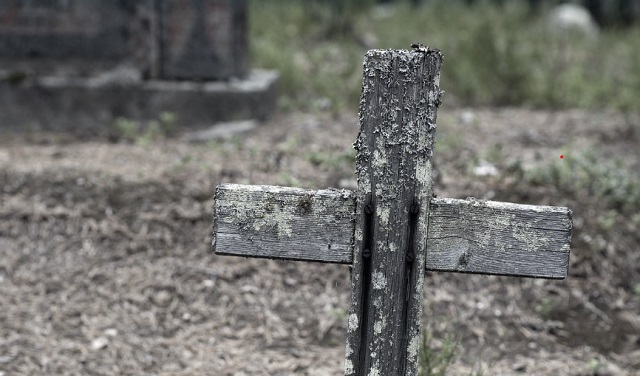
Business
Judges are Remaking Constitutional Law, Not Applying it – and Canadians’ Property Rights are Part of the Collateral Damage
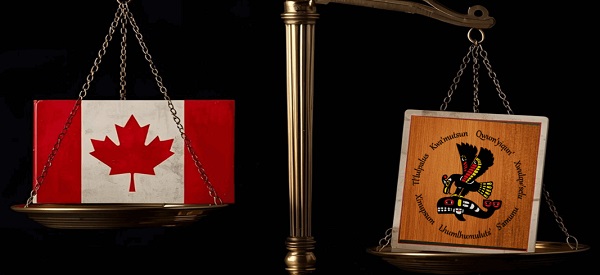
By Peter Best
The worst thing that can happen to a property owner isn’t a flood or a leaky foundation. It’s learning that you don’t own your property – that an Aboriginal band does. This summer’s Cowichan Tribes v. Canada decision presented property owners in Richmond B.C. with exactly that horrible reality, awarding Aboriginal
title to numerous properties, private and governmental, situated within a large portion of Richmond’s Fraser River riverfront area, to Vancouver Island’s
Cowichan Tribes. For more than 150 years, these properties had been owned privately or by the government. The Cowichan Tribes had never permanently lived
there.
But B.C. Supreme Court Justice Barbara Young ruled that because the lands had never been formally surrendered by the Cowichans to the Crown by treaty, (there
were no land-surrender treaties for most of B.C.), the first Crown grants to the first settlers were in effect null and void and thus all subsequent transfers down
the chain of title to the present owners were defective and invalid.
The court ordered negotiations to “reconcile” Cowichan Aboriginal title with the interests of the current owners and governments. The estimated value of the
property and government infrastructure at stake is $100 billion.
This ruling, together with previous Supreme Court of Canada rulings in favour of the concept of Aboriginal title, vapourizes more than 150 years of legitimate
ownership and more broadly, threatens every land title in most of the rest of B.C. and in any other area in Canada not subject to a clear Aboriginal land surrender
treaty.
Behind this decision lies a revolution – one being waged not in the streets but in the courts.
In recent years Canadian judges, inspired and led by the Supreme Court of Canada, have become increasingly activist in favour of Aboriginal rights, in effect
unilaterally amending our constitutional order, without public or legislative input, to invent the “consult and accommodate” obligation, decree Aboriginal title and grant Canadian Aboriginal rights to American Indians. No consideration of the separation of powers doctrine or the national interest has ever been evidenced by
the Court in this regard.
Following the Supreme Court’s lead, Canadian judges have increasingly embraced the rhetoric of Aboriginal activism over restrained, neutral language, thus
sacrificing their need to appear to be impartial at all times.
In the Cowichan case the judge refused to use the constitutional and statutory term “Indian,” calling it harmful, thereby substituting her discretion for that of our
legislatures. She thanked Aboriginal witnesses with the word “Huychq’u”, which she omitted to translate for the benefit of others reading her decision. She didn’t
thank any Crown witnesses.
What seems like courtesy in in fact part of a larger pattern: judges in Aboriginal rights cases appearing to adopt the idiom, symbolism and worldview of the
Aboriginal litigant. From eagle staffs in the courtroom, to required participation in sweat lodge ceremonies, as in the Supreme Court-approved Restoule decision,
Canada’s justice system has drifted from impartial adjudication toward the appearance of ritualized, Aboriginal-cause solidarity.
The pivot began with the Supreme Court’s 1997 Delgamuukw v. British Columbia decision, which first accepted Aboriginal “oral tradition” hearsay evidence. Chief
Justice Lamer candidly asked in effect, “How can Aboriginals otherwise prove their case?” And with that question centuries of evidentiary safeguards intended
to ensure reliability vanished.
In Cowichan Justice Young acknowledged that oral tradition hearsay can be “subjective” and is often “not focused on establishing objective truth”, yet she
based much of her ruling on precisely such “evidence”.
The result: inherently unreliable hearsay elevated to gospel, speculation hardened into Aboriginal title, catastrophe caused to Richmond private and government property owners, the entire land titles systems of Canadian non-treaty areas undermined, and Crown sovereignty, the fount and source of all real property rights generally, further undermined.
Peter Best is a retired lawyer living in Sudbury, Ontario.
The original, full-length version of this article was recently published in C2C Journal.
Indigenous
Constitutional lawyer calls for ‘false’ claims to end in Canadian residential schools burials
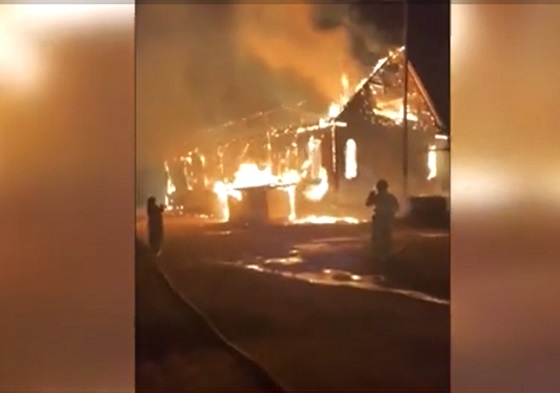
From LifeSiteNews
Justice Centre for Constitutional Freedoms founder John Carpay said unsubstantiated claims foster a hatred that led to churches being destroyed by arson, vandalized and desecrated.
One of Canada’s top constitutional lawyers blasted what he said are “false” and “virtue-signaling” displays of “truth and reconciliation” goals pushed by the federal government and media when it comes to indigenous “land acknowledgments.”
In a recent opinion piece, John Carpay, founder and president of the Justice Centre for Constitutional Freedoms (JCCF), said the “unsubstantiated claim” that thousands of indigenous kids were buried and disregarded by Catholic priests and nuns who ran some Canadian residential schools must be countered.
“Truth and reconciliation are goals worth pursuing,” wrote Carpay, adding, “which is why all Canadians, whether Aboriginal or non-Aboriginal, should not settle for the hypocritical virtue-signaling displayed through land acknowledgments.”
“Nor should we embrace false claims that foster division, or race-based laws that generate strife,” he noted.
In 2021 and 2022, the mainstream media ran with inflammatory and dubious claims that hundreds of children were buried and disregarded by Catholic priests and nuns who ran some Canadian residential schools. The reality is, after four years, there have been no mass graves discovered at residential schools.
However, as the claims went unfounded, since the spring of 2021, over 120 churches, most of them Catholic, many of them on indigenous lands that serve the local population, have been burned to the ground, vandalized, or defiled in Canada.
Carpay observed how the “inflammatory assertion” of the graves claims was based on ground penetrating radar, “which can only locate soil disturbances beneath the ground, and cannot locate human remains.”
He noted that the only way to find out for certain is for “excavation” to take place, to uncover the “truth.”
To date, the reality, as stated by Carpay, is “no field work has been conducted.”
“Rather, this unsubstantiated claim fosters the hatred that was on display when, following the May 2021 allegation, dozens of churches in Canada were burned and destroyed by arson, with dozens more vandalized and desecrated,” he said.
As reported by LifeSiteNews, retired Manitoba judge Brian Giesbrecht said in October 2024 that Canadians are being “deliberately deceived by their own government” after blasting the now former federal government of Justin Trudeau for “actively pursuing” a policy that blames the Catholic Church for the unfounded “deaths and secret burials” of Indigenous children.
Carpay noted how the Department of Crown-Indigenous Relations has “censored all details of what became of” some $12.1 million the k’emlúps te Secwe̓pemc First Nation received to conduct yet to be done excavations.
“This strongly suggests — but does not prove — that the claim about buried bodies is false,” Carpay wrote.
“Do the Tk’emlúps te Secwe̓pemc fear embarrassment and humiliation if an excavation fails to turn up the remains of 215 children? Where is their respect for the taxpayers’ money that was provided to them for a specific purpose? How is this refusal to conduct an excavation helpful to the goal of reconciliation?”
Carpay: ‘True’ reconciliation will only come once laws based on race or ancestry are ‘abolished’
Residential schools, although run by both the Catholic Church and other Christian churches, were mandated and established by the federal government. They were in operation from the late 19th century until the last school closed in 1996.
While some children did tragically die at the once-mandatory boarding schools, evidence has revealed that many of the children passed away as a result of unsanitary conditions due to underfunding by the federal government, not the Catholic Church.
Carpay said the only way for reconciliation among Canadians to happen is if everyone to truly has equal status under the law.
“Ultimately, true reconciliation among Canadians can only be achieved after we have abolished laws that are based on race, ethnicity, ancestry, or descent,” he wrote.
“When some Canadians — based on their ancestry or descent — have special, different, or superior rights, it necessarily leads to friction, strife, and resentment.”
Carpay added that the “best way” to achieve reconciliation is for all “Canadians to pay the same taxes, for all Canadians to have equal access to public spaces, for all Canadians to enjoy the same hunting and fishing opportunities, and for all Canadians to be equal before the law.”
“Anything else is, quite simply, racist,” he added.
Recent polling has shown that over two-thirds of Canadians want some kind of proof of the “unmarked graves” before believing the claims that Indigenous children were secretly murdered and buried at residential schools by Catholic clergy.
-

 Business2 days ago
Business2 days agoThe painful return of food inflation exposes Canada’s trade failures
-

 Business18 hours ago
Business18 hours agoTrans Mountain executive says it’s time to fix the system, expand access, and think like a nation builder
-
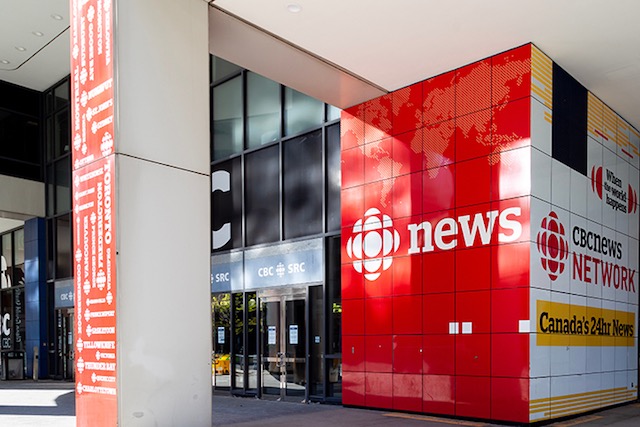
 Business2 days ago
Business2 days agoCBC uses tax dollars to hire more bureaucrats, fewer journalists
-
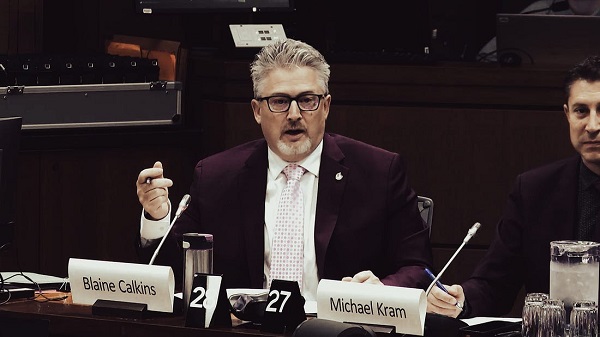
 National2 days ago
National2 days agoElection Officials Warn MPs: Canada’s Ballot System Is Being Exploited
-

 Business2 days ago
Business2 days agoPaying for Trudeau’s EV Gamble: Ottawa Bought Jobs That Disappeared
-
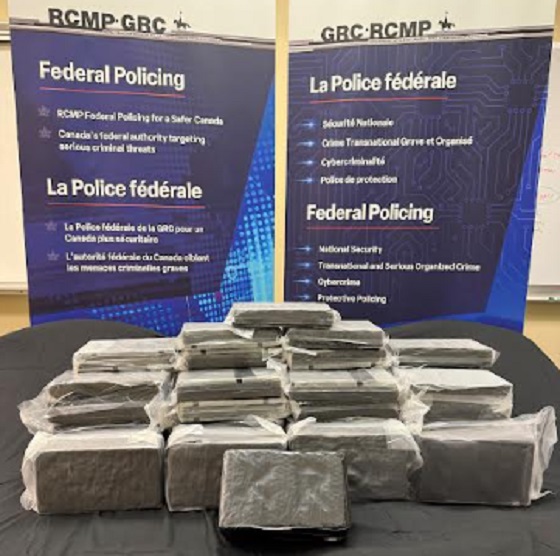
 Alberta2 days ago
Alberta2 days agoCoutts border officers seize 77 KG of cocaine in commercial truck entering Canada – Street value of $7 Million
-

 Bruce Dowbiggin2 days ago
Bruce Dowbiggin2 days agoIs Roundball A Square Game? Sports Betting Takes Another Hit
-

 Alberta1 day ago
Alberta1 day agoPremier Smith sending teachers back to school and setting up classroom complexity task force

 A moral panic: Following the May 27, 2021 announcement that the remains of 215 “missing children” were found at the former Kamloops Indian Residential School, a narrative quickly took hold at home and abroad that Canada was guilty of genocide against native children. At bottom left, the World Press Photo of the Year showing red dresses on crosses, at right The Guardian from May 28, 2021. (Sources of photos: (top left)
A moral panic: Following the May 27, 2021 announcement that the remains of 215 “missing children” were found at the former Kamloops Indian Residential School, a narrative quickly took hold at home and abroad that Canada was guilty of genocide against native children. At bottom left, the World Press Photo of the Year showing red dresses on crosses, at right The Guardian from May 28, 2021. (Sources of photos: (top left)  Correcting the record: The new book Grave Error: How the Media Misled us (And the Truth About Residential Schools) pushes back against the genocide myth with the application of careful research and hard evidence.
Correcting the record: The new book Grave Error: How the Media Misled us (And the Truth About Residential Schools) pushes back against the genocide myth with the application of careful research and hard evidence.
 Myth busting: Among the many false narratives tackled by Grave Error are the legend of murdered children spread by defrocked United Church minister Kevin Annett (top left), the unreliability of ground-penetrating radar searches (top right) and the allegation that 150,000 Indigenous students were “forced to attend” residential schools. At bottom, native artist Kent Monkman’s historically inaccurate painting Study for the Removal of Children.
Myth busting: Among the many false narratives tackled by Grave Error are the legend of murdered children spread by defrocked United Church minister Kevin Annett (top left), the unreliability of ground-penetrating radar searches (top right) and the allegation that 150,000 Indigenous students were “forced to attend” residential schools. At bottom, native artist Kent Monkman’s historically inaccurate painting Study for the Removal of Children. Public attacks on Canada’s residential school system began in earnest on October 30, 1990 when Manitoba regional chief Phil Fontaine (left) alleged he suffered sexual abuse at a school as a child on Barbara Frum’s (right) CBC television show The Journal. (Source of screenshots:
Public attacks on Canada’s residential school system began in earnest on October 30, 1990 when Manitoba regional chief Phil Fontaine (left) alleged he suffered sexual abuse at a school as a child on Barbara Frum’s (right) CBC television show The Journal. (Source of screenshots: 






